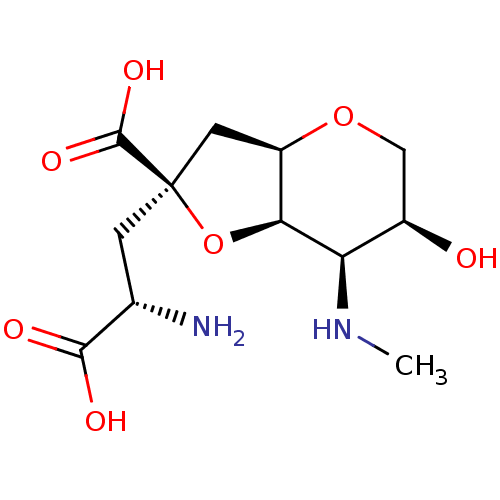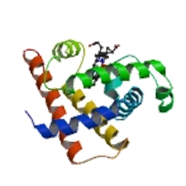

 Search and Browse
Search and Browse
 Download
Download
 Enter Data
Enter Data
| Target/Host (Institution) | Ligand | Target/Host Links | Ligand Links | Trg + Lig Links | Ki nM | ΔG° kJ/mole | IC50 nM | Kd nM | EC50/IC50 nM | koff s-1 | kon M-1s-1 | pH | Temp °C |
|---|---|---|---|---|---|---|---|---|---|---|---|---|---|
| Glutamate receptor ionotropic, kainate 1 (Homo sapiens (Human)) | BDBM85740 (Dysiherbaine) | PDB MMDB KEGG UniProtKB/SwissProt B.MOAD DrugBank antibodypedia GoogleScholar AffyNet | MMDB PC cid PC sid PDB UniChem Patents | MMDB PDB Article PubMed | 0.740 | n/a | n/a | n/a | n/a | n/a | n/a | n/a | n/a |
Yokohama City University Curated by ChEMBL | Assay Description Displacement of [3H]kianic acid from recombinant GluK1 kainate receptor (unknown origin) expressed in HEK293 cell membranes measured after 1 hr | Bioorg Med Chem Lett 26: 5164-5167 (2016) Article DOI: 10.1016/j.bmcl.2016.09.074 BindingDB Entry DOI: 10.7270/Q2ZG6V6F | |||||||||||
| More data for this Ligand-Target Pair |  3D Structure (crystal) | ||||||||||||
| Glutamate receptor ionotropic, kainate 2 (Homo sapiens (Human)) | BDBM85740 (Dysiherbaine) | PDB UniProtKB/SwissProt antibodypedia GoogleScholar AffyNet | MMDB PC cid PC sid PDB UniChem Patents | Article PubMed | 1.20 | n/a | n/a | n/a | n/a | n/a | n/a | n/a | n/a |
Yokohama City University Curated by ChEMBL | Assay Description Displacement of [3H]kianic acid from recombinant GluK2 kainate receptor (unknown origin) expressed in HEK293 cell membranes measured after 1 hr | Bioorg Med Chem Lett 26: 5164-5167 (2016) Article DOI: 10.1016/j.bmcl.2016.09.074 BindingDB Entry DOI: 10.7270/Q2ZG6V6F | |||||||||||
| More data for this Ligand-Target Pair | |||||||||||||